Tender and juicy pieces of beautifully caramelized, richly flavored pieces of Hunan chicken tossed with vegetables roasted with garlic and ginger. This chicken is not only delicious but also healthy and light. This is a traditional Hunan style chicken recipe, which is different from westernized Hunan recipes that tend to be overly fatty, sweet and gloppy.
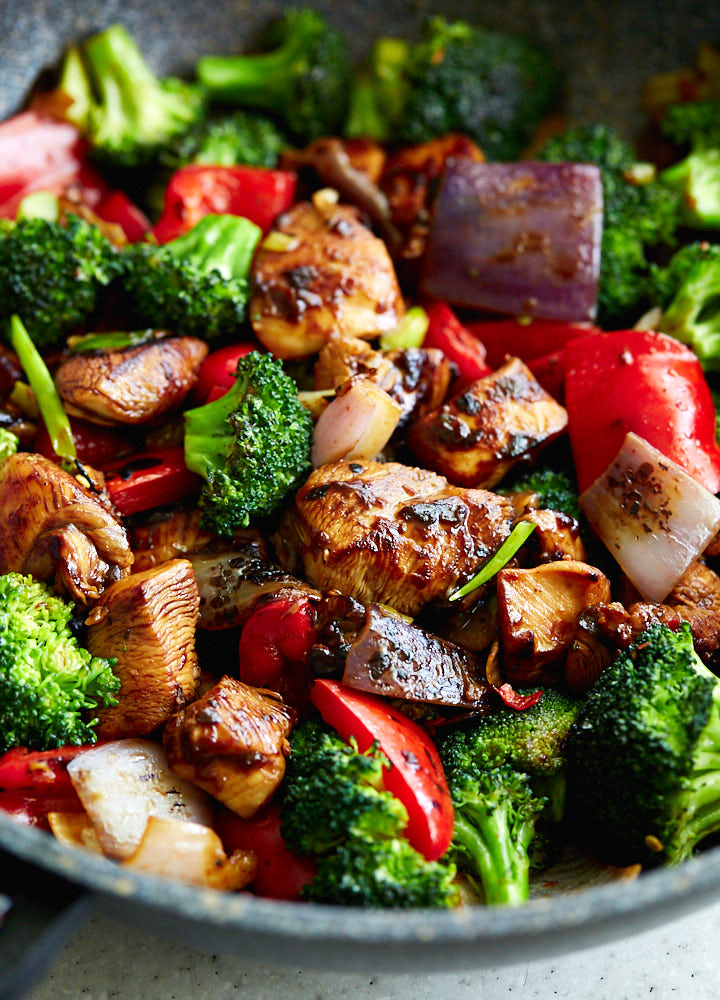
My 7-year-old daughter after she finished eating this chicken for lunch said "Daddy, the chicken was so!... so!... so!..." She was overwhelmed with emotions and had a hard time finding the right word to describe how good she thought the chicken tasted. I get compliments on my cooking very regularly, but that one was very special to me. I agree, the chicken was superb. A perfection.
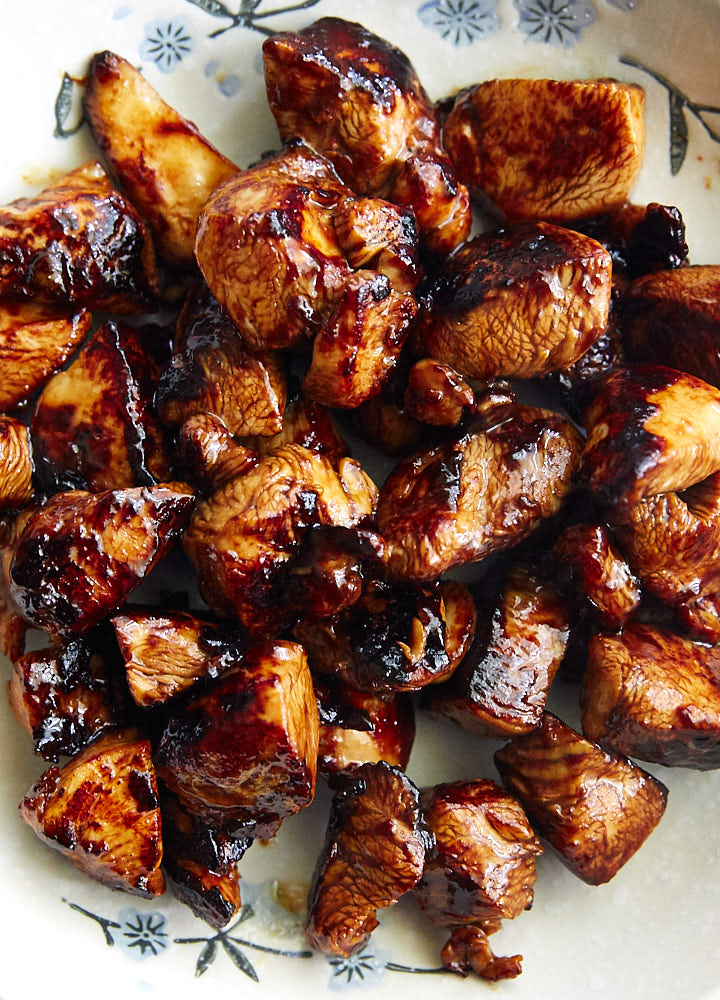
My favorite meat for making Hunan chicken is breast meat. When cooked right, it tastes much better than red chicken meat. It's less fatty and healthier too.
To cook the chicken I suggest using a wok. A while ago I bought a Korean made non-stick, flat bottom wok (it's very similar to this one) to cook Asian dishes. I came to love that wok so much that I use it for practically everything that needs pan frying. I even fry sunny-side up eggs in it. Everything just comes out better in it. It's a magical wok.
I cut chicken breasts into about 1-inch pieces, lay them in one layer inside the wok and cook them over a fairly high heat on one side for about 1 minute until nicely caramelized, then flip to the other side and cook for another minute or so, undisturbed. I then continue stir-frying until the temperature inside the largest pieces reaches 160F. An instant read thermometer comes really handy here. As soon as the chicken is ready I dump it onto a large ceramic platter to cool down. This way I get the meat that is perfectly cooked, tender and juicy.
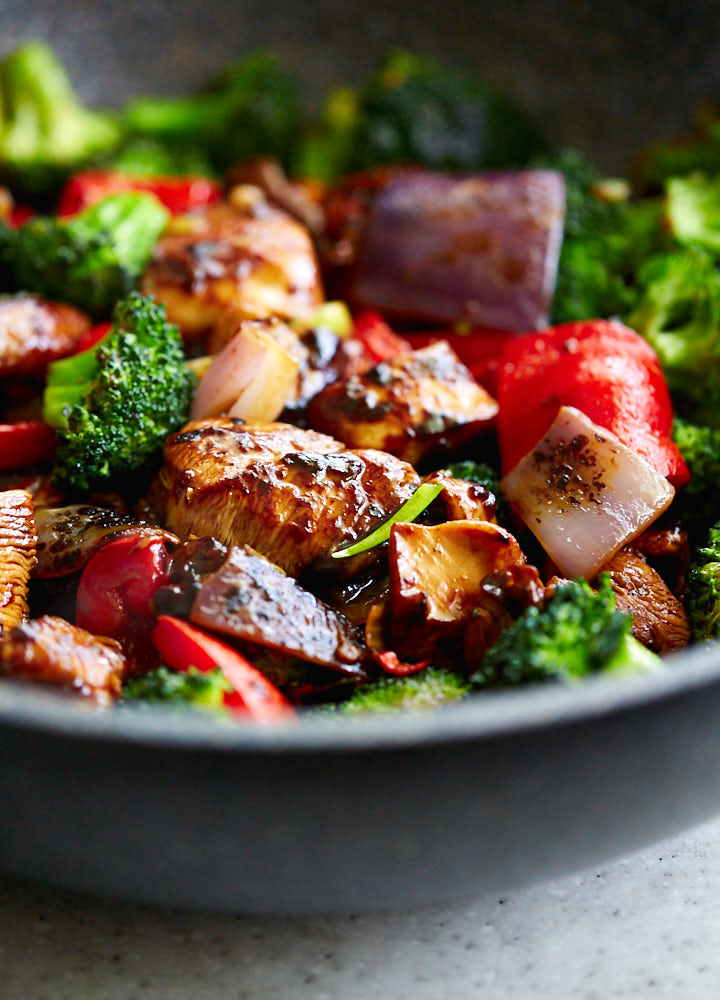
Unlike for example in Szechuan Chicken recipe, or the Hunan Beef recipe, I used neither the deep-frying nor the shallow-frying methods to cook the Hunan chicken. This time I only used 2 tablespoons of peanut oil. To my surprise, that turned out to be plenty enough. I really like this method because it's much more economical and adds a lot less fat into the food.
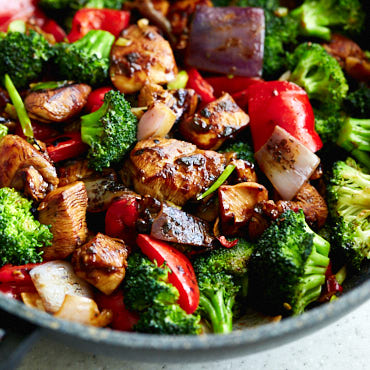
Ingredients
- 2 chicken breasts cut into 1-inch pieces
- 3 Tbsp peanut oil (for stir frying)
For the marinade:
- 1 Tbsp Shaoxing wine or dry sherry
- 1 tsp kosher salt (or sea salt)
- 2 tsp light soy sauce
- 2 tsp dark soy sauce
- 1 Tbsp potato starch 10 g / 1/3 oz
- 1½ Tbsp water
For the stir fry:
- 1 inch fresh ginger (thinly sliced)
- 3 garlic cloves (large, minced or thinly sliced)
- 2 Thai chiles (de-seeded and chopped. This is for mild. Add more if desired)
- 1/4 tsp kosher salt (plus more to taste)
- 4 scallions cut on the diagonal, about 1/2" long
- 1 red bell pepper cut into 1 inch pieces
- 1 red onion (medium, cut into 1 inch pieces)
- 4 cups broccoli florets 200 g / 7.5 oz
- 1 tsp sesame oil
Instructions
- In a medium size bowl, combine the ingredients for the marinade and stir. Add the chicken pieces and stir well to ensure proper coverage. Let the meat marinate for about 10-15 minutes at room temperature.
- Heat 2 tablespoons of peanut oil in a wok over medium-high heat, until the oil is about 300F. Place the chicken in a single layer and fry for about 1 minute, until nicely caramelized. Flip the chicken pieces over to the other side and cook for another minute. Continue frying, stirring frequently, until the chicken is just done, about 2-3 minutes. (I like using my instant read thermometer to check for doneness and pull the chicken when it hits 160F internal temperature). Transfer the chicken to a platter, spread out and set aside.
- In the same wok, heat another 1 tablespoon of peanut oil. Add the garlic and the ginger and stir fry for about 30 seconds, until slightly browned and fragrant. Now add the bell pepper, broccoli, red onion and stir fry for about 3 minutes, until the veggies have softened up and look slightly charred. Add the Thai chiles and stir fry for 30 seconds. Return the chicken to the wok, add sesame oil, scallions and stir well. Taste and adjust salt to taste. Continue stir-frying until the chicken is sizzling and fragrant, about a minute. Remove from heat and serve immediately with steamed rice or any other side of choice.
Nutrition


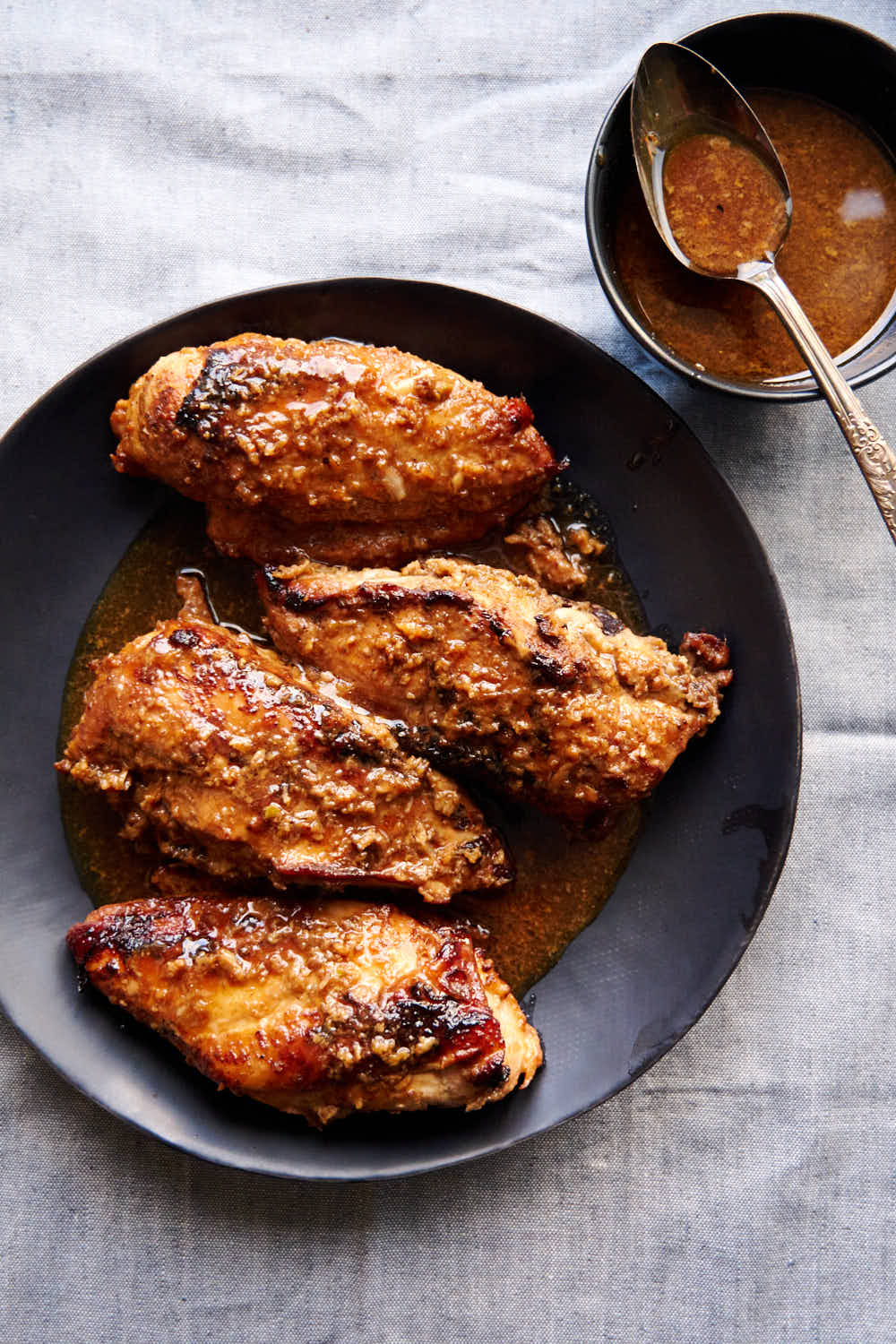

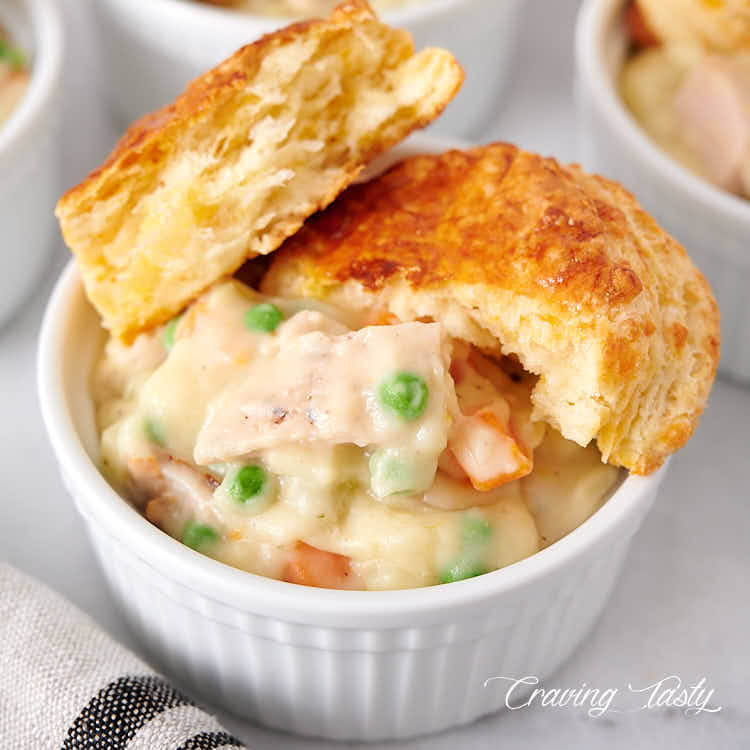

Steve Miller says
This is a nice, fairly simple recipe. The taste is good and has a great fragrance, but there are a few things I stumbled through. As a caveat, I only cook occasionally and have prepared Chinese food for some 40 years. This recipe took me almost 90 minutes. I suppose you could do it in 25 minutes with a prep coook, but getting everything cut up took 45 minutes with another 25 minutes cook time. Plus clean up.
Cooking the chicken is not straight forward. In a wok, you walk a fine line between not enough heat and too much. The marinade tends to form carbonized gunk, and I’m not sure how you “flip” 60 plus pieces from one side to the other in under a minute. I ended up letting it sit for 45 seconds, stir it up (it is stir fry), let it sit for 45 seconds, and repeat. Several times. It took me about 7 minutes to get the chicken cooked, but never did get that beautiful caramalized appearance. I’m not sure what an “instant read” thermometer is, but I’m pretty sure you won’t find one in a Hunan country kitchen.
Traditional Hunan cooking uses dried chilies, not Thai. I thought about doing this but decided against spending more time deveining tiny chilies. Instead I used a teaspoon of dried chilies, but you could also use 6 (or so) dried Szechuan chilies. In my gold standard, Brandy Ho’s Hunan on Pacific Street in San Francisco, they mix ginger, garlic, and the peppers and then stir fry them in a little hot oil until they start to turn brown. This oil is what gives Hunan food it’s taste. Every Hunan or Szechuan recipe I’ve made does this. The end wasn’t as spicy as I like, but you’d have to make this a couple times to titrate the heat for your palate. (Or you could use Huy Fong Chile Garlic Sauce as a condiment.)
Overall, however, this is a great introduction to Hunan but westernized somewhat.
victor says
Hi Steve, I enjoyed reading your perspective on this recipe and learning something new. So many things to try, so many things to learn...
John says
There is no such thing as "red chicken meat" that's fattier and less healthy. Dark meat is closer to the bone, tastier when cooked(especially grilled and baked) and just as healthy.
Seriously.... you're a city fellow that has never killed and cleaned ANYTHING for human consumption?
victor says
'Dark' and 'red' are used interchangeably when referring to chicken leg and thigh meat. White has always been referred to as healthier, and I subscribe to that notion as well. I do live in a large city now, but I spent a fair amount of time working on my grandparents' farm growing up. Though still not sure what that's got to do with dark or red chicken meat.
Lara says
I have been looking for a recipe like this for a while and was happy to find it. I like the simple authentic ingredients and no pre-made sauces that often are hard to find or they just ruin the taste. To make the long story short, I made this chicken and it is delicious!!!!!!!!! As good as it gets and I tried this dish at many restaurants.
Ada Waller says
What is the sodium amt per serving
victor says
Nutrition label adjusted, now shows sodium.
Katherine says
How ever much you add to it.
Chi says
This is now my go-to recipe. The flavors are out of this world delicious and the dish is very easy to make.
Marishka says
Delicioso!